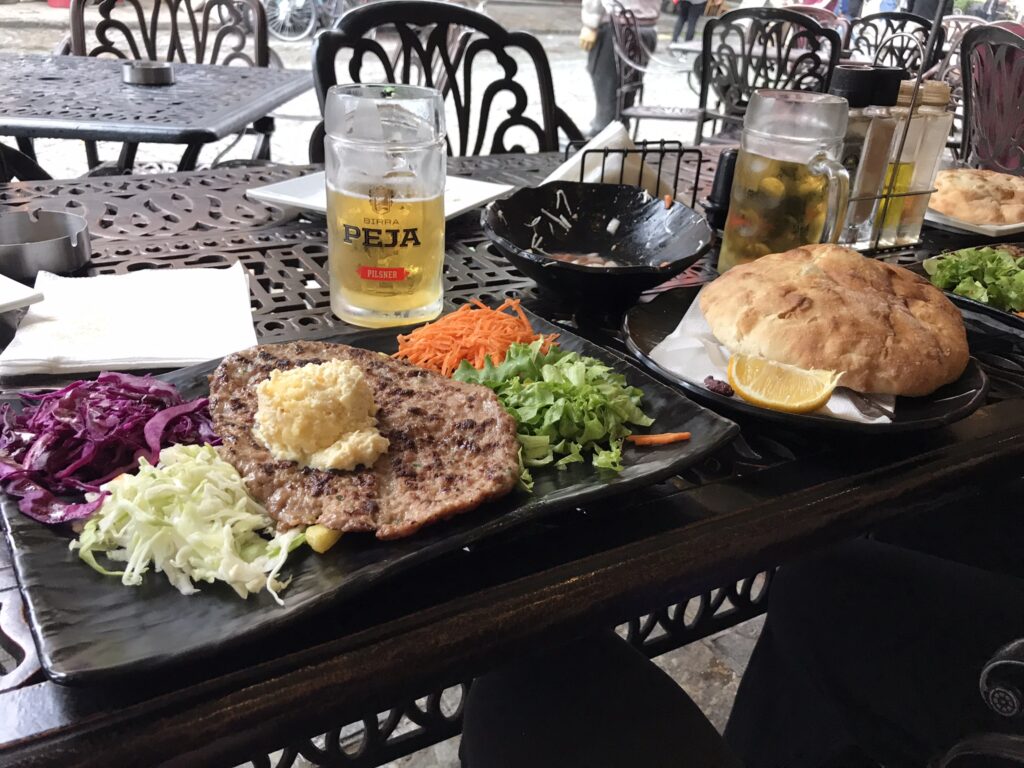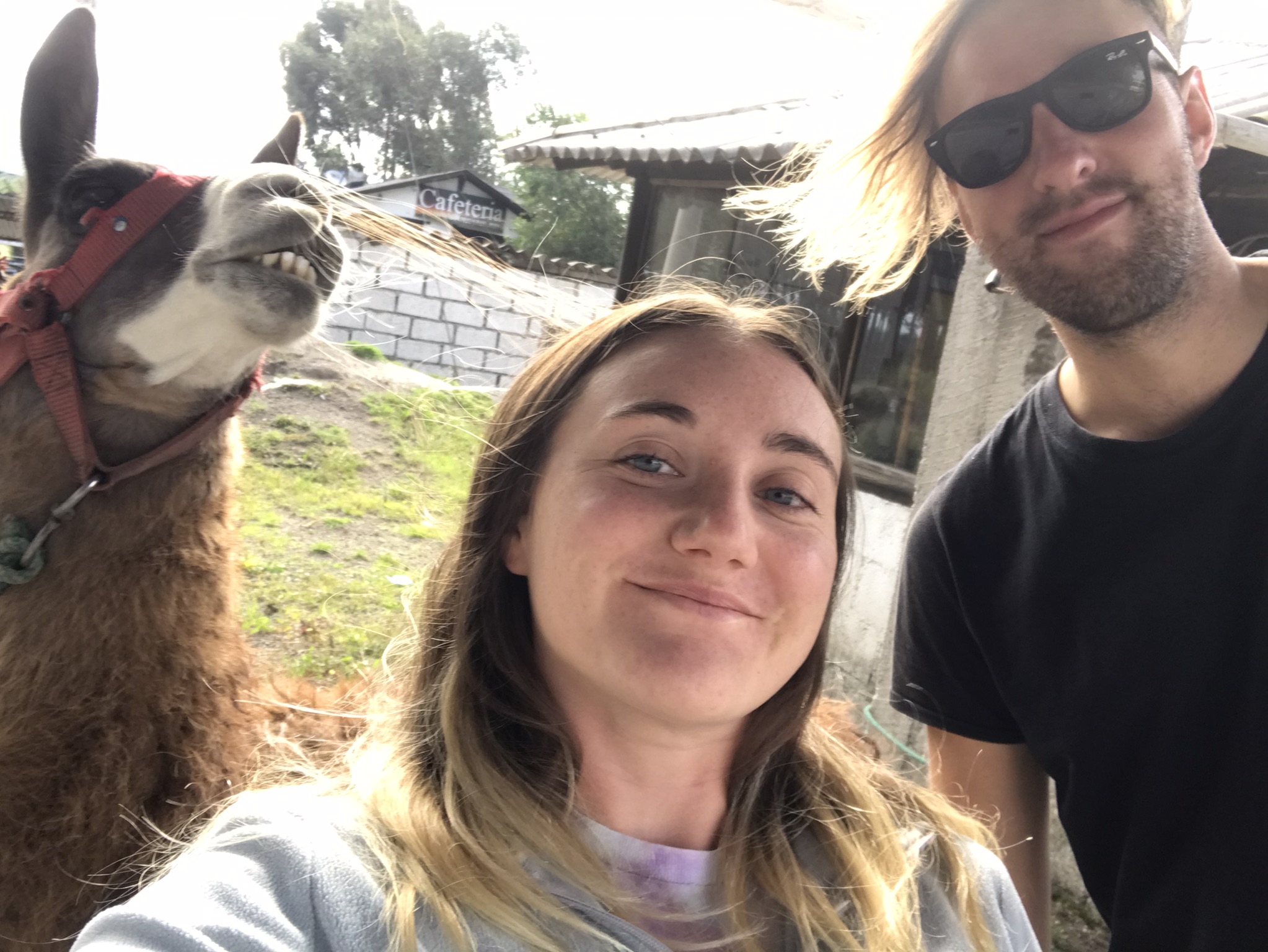Kosovo, a partially-recognised state, is one of the most intriguing and least visited parts of the Balkans and Europe. Kosovo is about as far off the beaten track as it gets in Europe, entering Kosovo is not recommended via the northern border with Serbia however it’s easy to reach Kosovo by bus from Skopje, North Macedonia. So naturally after exploring Skopje, we headed to the bus station with our bags in tow and managed to find a minibus to Pristina without a hitch. Check out my Kosovo travel experiences below!
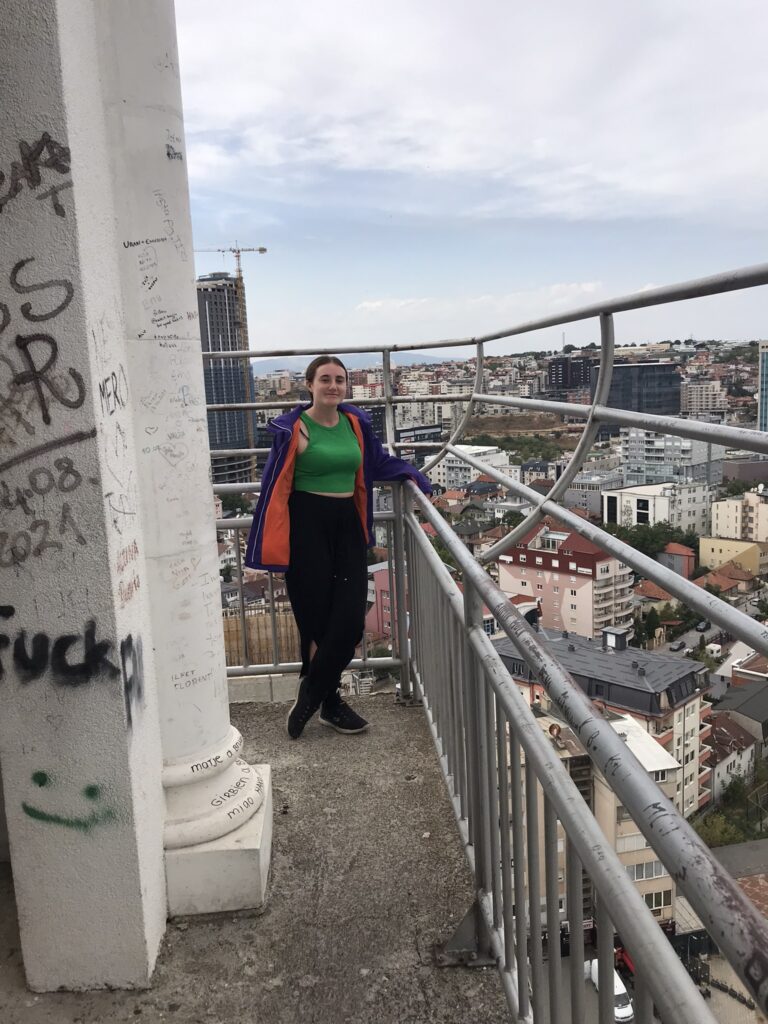
Like most of the Balkans, to visit Kosovo it’s important to understand its history. Kosovo is a self-declared nation which is recognised by just over half of UN members, however it is also still claimed by Serbia creating a strange situation with its status as a nation varying depending on who you ask. Kosovo, which is home to both ethnic Albanians and Serbians, was previously part of Yugoslavia and had enjoyed a privileged, autonomous status within Yugoslavia, however this ended in 1989 with Slobodan Milošević (Serbian President). Ethnic Albanians in Kosovo felt persecuted and that their rights were being suppressed. Kosovo wanted to be free from Yugoslavia (and later the nation of Serbia and Montenegro) however Serbia did not want to let go of Kosovo without a fight. This culminated in the Kosovo war of 1998-1999 which ended when NATO bombed Yugoslavia (mostly Serbia) and forced their retreat from Kosovo.
As a result of this conflict, hundreds of thousands of Kosovo Albanians were displaced from their homes with some fleeing to other countries as refugees. As many as 15,000 people including civilians (including Kosovo Serbs) died as a result of the war. Mosques were damaged and destroyed as part of a campaign of ethnic cleansing by the Serbian army. Mass executions of Albanian civilians occurred with mass graves being uncovered in Serbia, made in an attempt to conceal war crimes. Sexual crimes such as rape and violence were committed by the Serb army, police and paramilitaries during the course of the conflict against ethnic Albanian women.
In 2004, tensions again came to head when a wave of ethnically-motivated riots spread through Kosovo resulting in the destruction of many Serbian Orthodox churches in Prizren.
In 2008, Kosovo declared its independence from Serbia, however it is still not recognised by a number of countries, including some with ties to Serbia. 94 United Nations countries including Russia and China do not recognise Kosovo as an independent country whereas the UK, US and 97 other UN countries do recognise its independence.
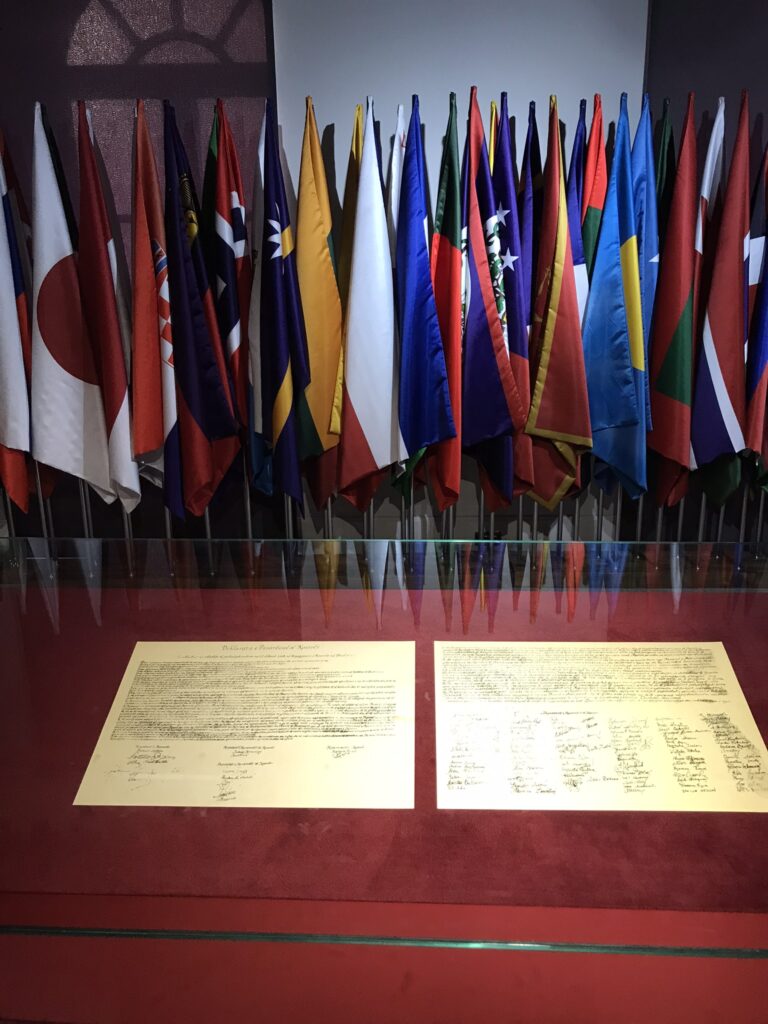
Flags of all the countries that recognise Kosovo’s independence on display in the Kosovo Museum
To this day, there remains a NATO peace-keeping contingent called Kosovo Force (KFor) in the region due to ongoing tensions between the overwhelming Albanian ethnic majority and Serb minority co-existing in Kosovo. Particular pressure points for strife are in the north close to the Serbian border. We happened to be in the country when Serb gunmen stormed the Serb-majority town of Banjsk, barricaded themselves in a nearby Orthodox monastery which ended in a shootout with the police and one police officer being killed (October 2023). We personally saw the flags flying at half-mast on the government building in response to the incident.
It’s important to note that the official language in Kosovo is Albanian and the majority of the population identify as Muslim. You’ll notice the Albanian flag flying alongside the flag of Kosovo on residential buildings. There is still sentiment amongst some people in Kosovo to join Albania and create a unified ethnic Albanian country, however the flying of the Albanian flag is mostly a historical thing to show their ethnic identity and desire to be separate from the Serbs. You will also see many flags and monuments to the UÇK (Kosovo Liberation Army), which was a nationalist militia fighting in the 90s for Kosovo’s independence from the Serbs.

UÇK sign at the top of the Fortress in Prizren
Pristina
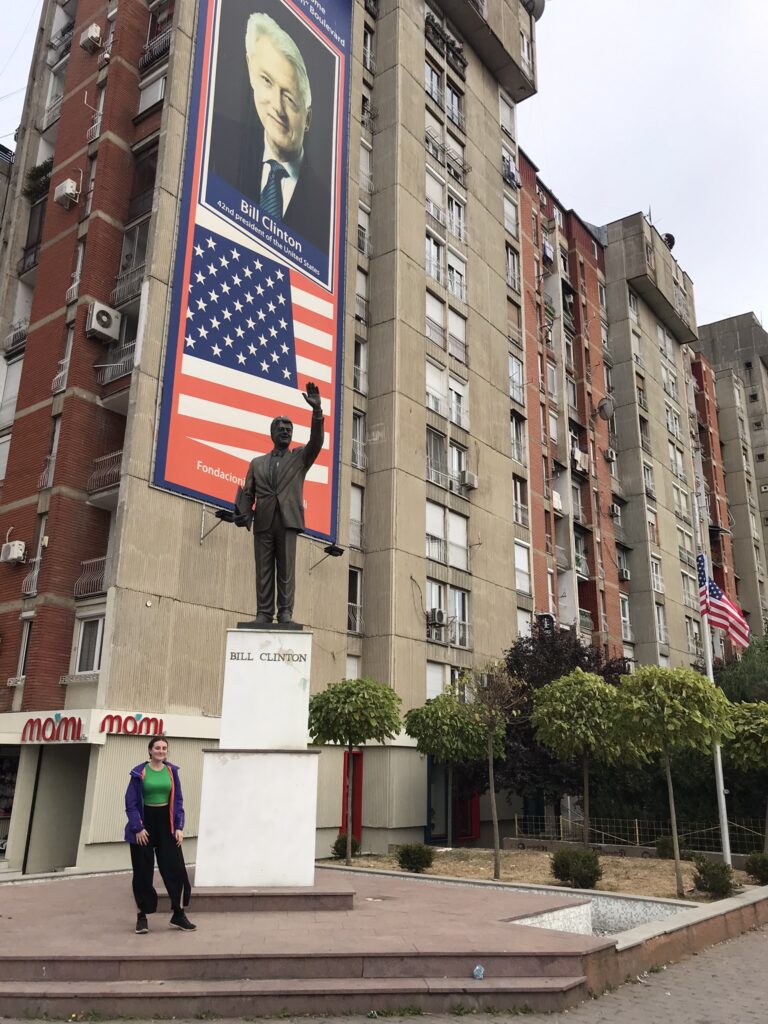
Bill Clinton is popular here because of his support for Kosovo in the 90s
An urban city filled with nondescript high-rise blocks, a concrete jungle of sorts. Some of the streets are named after American presidents like Bush (Xhorxh Bush near the Cathedral) and Clinton (Bill Klinton Bulvari), there is even a large mural and statue of Bill Clinton which is kind of surreal. The reason for this is the USA and NATO’s historical support of Kosovan independence. Despite being a little faceless on the surface, Pristina was quite a cosmopolitan city with a strong coffee culture and a few interesting areas and monuments to explore. We were surprised by the number of young people in the city who spoke English. It was strange for us to listen in to conversations which were a mix of Albanian and English.
Accommodation
Hostel Dera – we didn’t have the best experience here, there wasn’t a kitchen or a even fridge we could use to cook or store food. It felt like we were in someone else’s home in a strange way, like there were always shoes in the hallway but we never saw anyone. The main reception area wasn’t operational and was in the middle of construction. The rooms were quite small and there was only one shared bathroom between 4 rooms. The location was fab though, it was almost in the main square.
Foodie Places
Mery’s Food and Coffee – great lunch spot, it’s ideal if you like people watching as it overlooks the pedestrian Boulevard Teresa.
Rud’s Pizza Prishtina – Really, really tasty pizza. The menu is in English and the price/quality ratio is great. I highly recommend this place if you’re near Mother Teresa square. We had two pizzas and two cokes for £12. We loved the Balkan pizza which had local cheese and smoked salami on it!
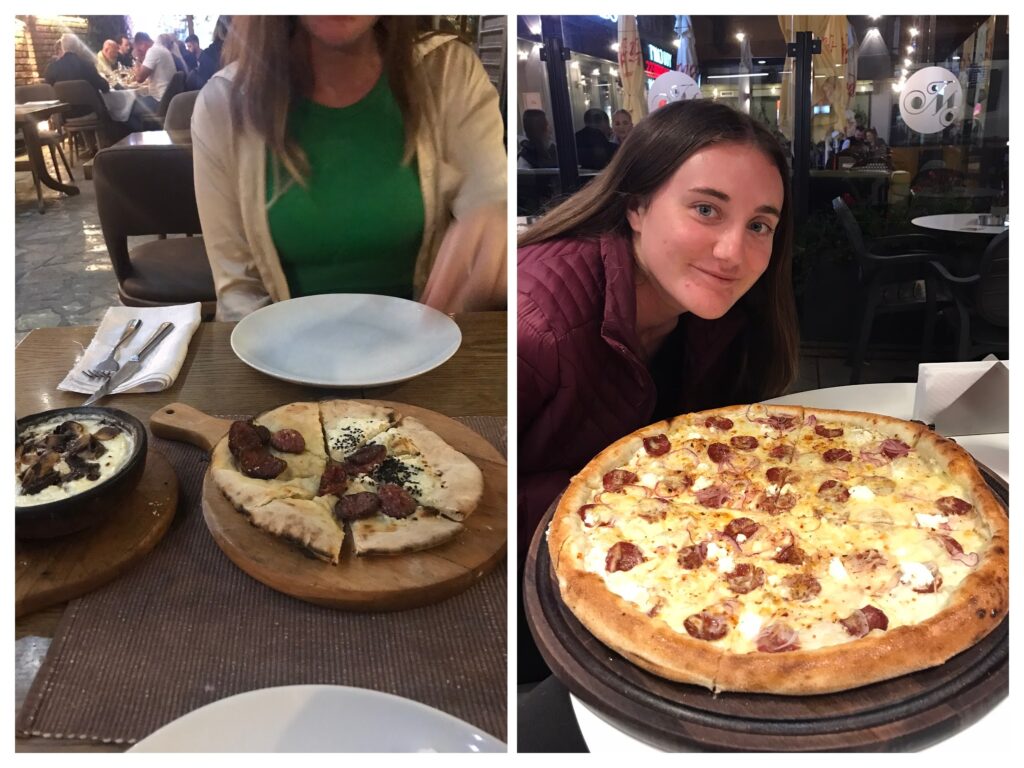
Pishat and a gigantic Balkan pizza from Rud’s
Pishat – a suave restaurant with Balkan classics on the menu.
Dit’ e Nat’ – this place was recommended to us by a local (Cirilim) we met on the minibus from Skopje. It’s a great place to hang out and sip homemade iced tea, the clientele is mostly students and the younger crowd. The menu is mainly plant-based and affordable. It was strange to overhear local youngsters here alternating between English and Albanian in their private conversations.
Activities
Free walking tour with Guruwalk, stops included the Bazaar, Sheshi Adem Jashari (an unusual monument with three forks), the Government Building, Mosque Xhamia “4 Llullat”, the Great Mosque, Hamam (Ottoman bathing complex), the Clock Tower, Muzeu Etnologjik (located in an old Ottoman-style family home, there are various artifacts about daily life on display such as clothing, furniture and musical instruments), Cathedral, Newborn Monument & nearby memorial park (the Newborn monument changes each year to fit a certain theme, when we visited it had been changed to NoNewBR meaning ‘No New Broken Republic’, commemorating Kosovo’s independence from Serbia and all the lives lost during the conflict as well as a response to the idea of some to partition Kosovo into Serb and Albanian territories) and National University Library of Kosovo (one of the weirdest buildings I’ve ever seen, all I can say to describe the architecture is it’s a mix of bubbles and metal). During the whole walking tour we were accompanied by a pack of street dogs who became very territorial when encountering other dogs on the walk, some of the other walkers were a little scared by the dogs.
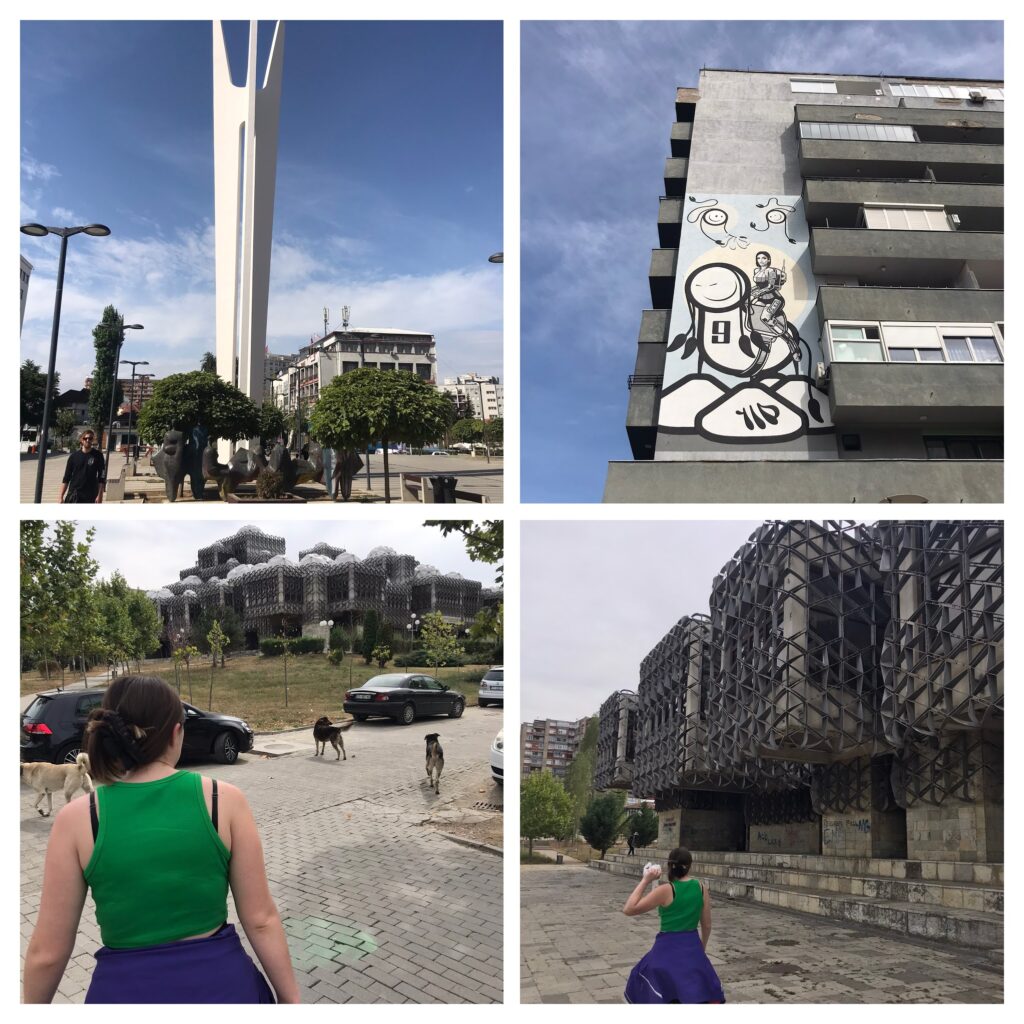
Did you know that Dua Lipa was originally from Kosovo?
Kosovo Museum – free entry with an interesting collection of historical objects charting Kosovo’s history through time. Of particular interest was a huge staple mural of Mother Teresa, apparently the largest mural made from staples in the world. The top level of the museum contains military memorabilia including guns, ammunition and uniform from the war and in an adjoining room are flags of the various countries that recognise Kosovo’s independence. A lot of the info here is only in Albanian but you can generally get the gist of what is going on.
Clock tower of the Cathedral – for a small entry fee you can use the elevator to reach the top of the clock tower, once at the top you can admire the 360 panoramic views of the various nearby high-rise blocks, squares and National Library building.
Prizren
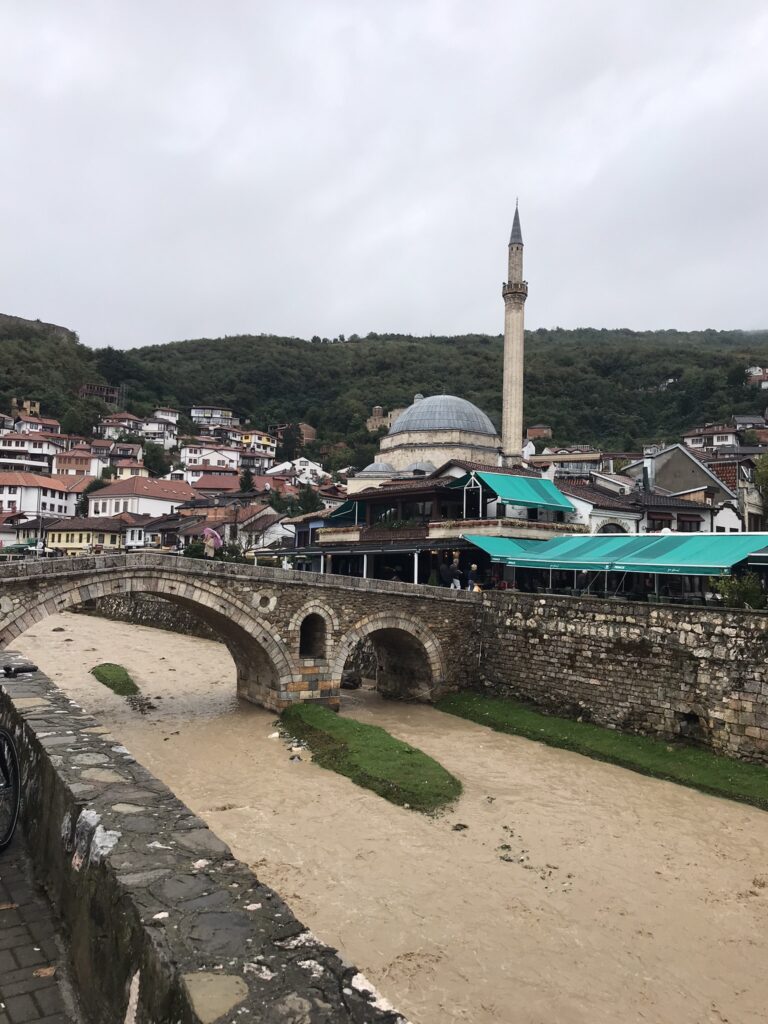
Prizren is the opposite of Pristina; where Pristina is modern, mostly high-rise buildings, Prizren is the more traditional, historic city to explore, especially the Old Town area with Ottoman street design, mosques and hamam complexes. Prizren was also at the centre of the 2004 riots in Kosovo, when many of the Orthodox Churches were targeted by locals because they were viewed as a symbol of Serbian heritage. Churches were set on fire, looted and attacked by mobs. A visit to Church of Our Lady of Ljeviš is a must, it’s an eye-opener about the events that unfolded during that time. The church itself was a Serbian Orthodox place of worship but is now burned out and covered in barbed wire to prevent entry or further damage, it was one of the places targeted during the ethno-religious riots in 2004. Many of these churches including Our Lady of Ljeviš were on the UNESCO World Heritage list and considered invaluable historical monuments. It’s a very sad chapter in local history. Guards are now based at the destroyed Orthodox churches to prevent trespassers and to shout at tourists who take photos. If a guard shouts at you, don’t take photos! This happened to us at Crkva Svete Nedelje and the Serbian Orthodox Church of St. George. We took the bus from Pristina to Prizren without issue and were able to return on the same day, just head to the bus station and buy a ticket (or pay on the bus if the ticket office isn’t open).
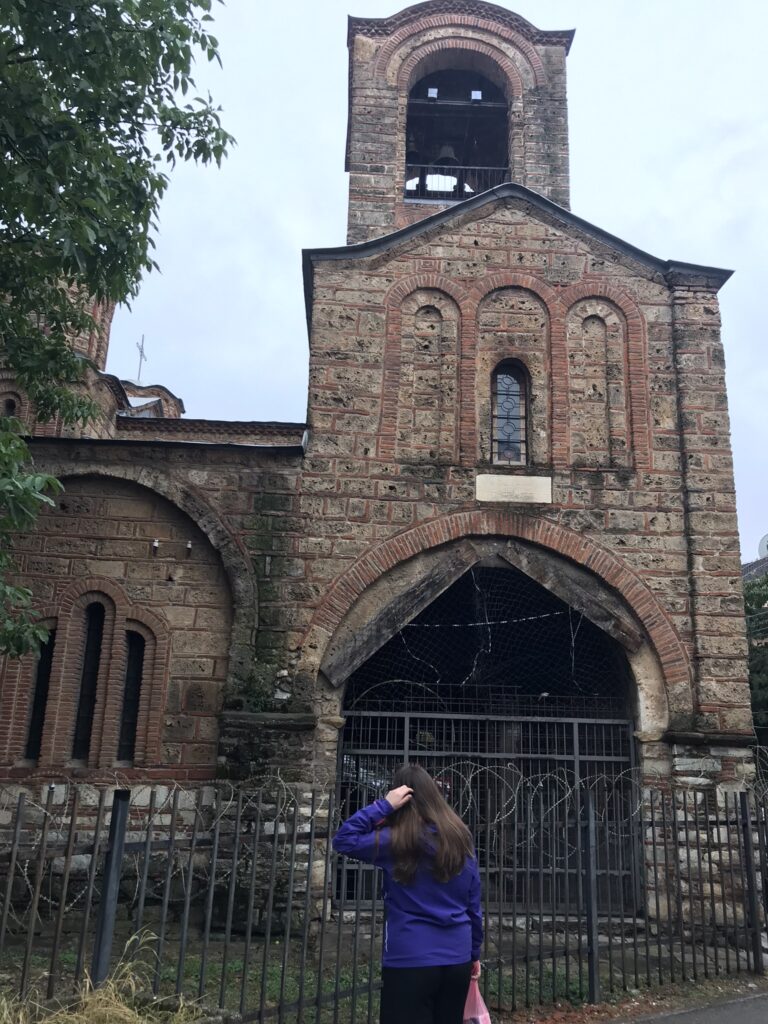
The destroyed UNESCO site in Prizren
Activities
Self-guided walking tour with GPSmycity, stops included the Stone Bridge at the centre of the Old historic district, it’s the most iconic feature of Prizren featuring in most tourist snaps of the city, Sinan Pasha Mosque, Crkva Svetog Nikole – Tutićeva Crkva (a tiny little Orthodox chapel), Hamam (a very well-preserved example of an Ottoman bathing complex), Catholic Cathedral of Our Lady of Perpetual Succour, Saint Panteleimon Church (on the way to the fortress, the main church building suffered heavy damage during the riots), Bajrakli Mosque (we were able to look around the outside but couldn’t enter the mosque as non-Muslims), Albanian League of Prizren and Marash (a very old tree).
Prizren Kalaja (Fortress) – Prepare yourself for quite a steep uphill hike to the top, once at the top the views over Prizren are unbeatable. We timed it just right to witness the call to prayer reverberating around the whole of Prizren, each mosque with a distinctive imam calling the masses to pray and each starting at a slightly different time, it was a magical experience. We also enjoyed meandering around the ruins, exploring the underground passages and subterranean rooms. Entry to the fortress is free, there are some plaques with information dotted around although many of them have been weathered and so are difficult to read.
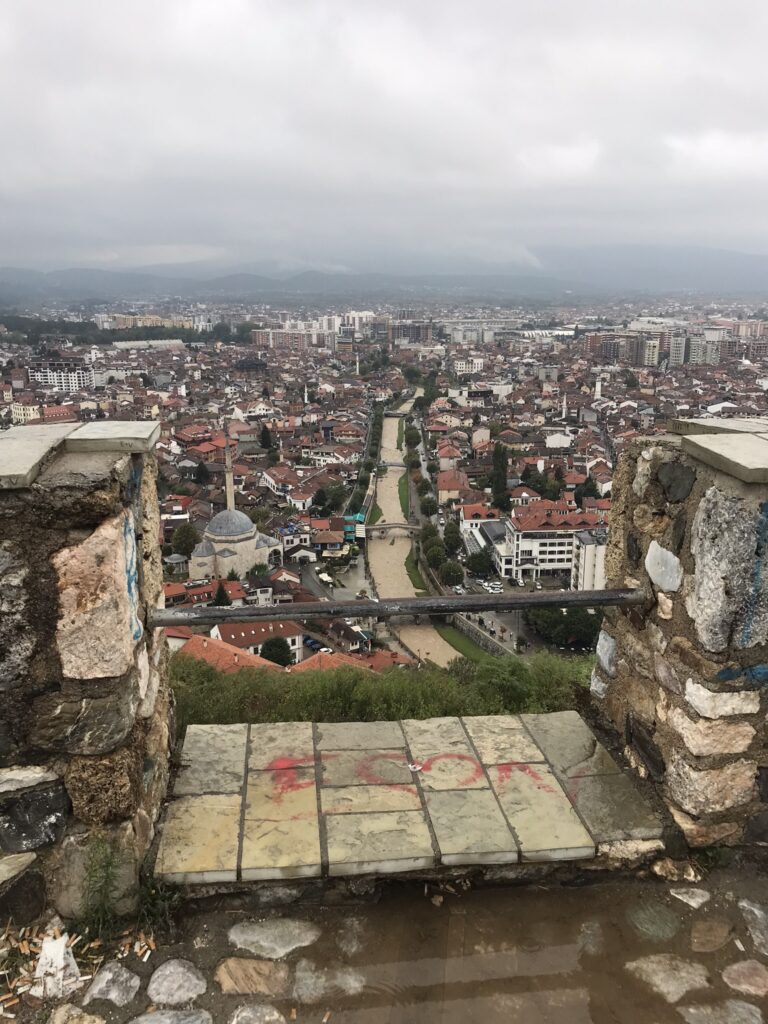
Great views of the historic district of Prizren from the top of the Fortress
Foodie Places
Restaurant Beska – a surprisingly large establishment, massive tour groups kept filing past us into the main restaurant area. We opted to sit outside on the street and watch the world go by. The meat patty with a beer is a great choice; it was unbelievably filling and tasty to the point that other diners were looking jealously in my direction.
